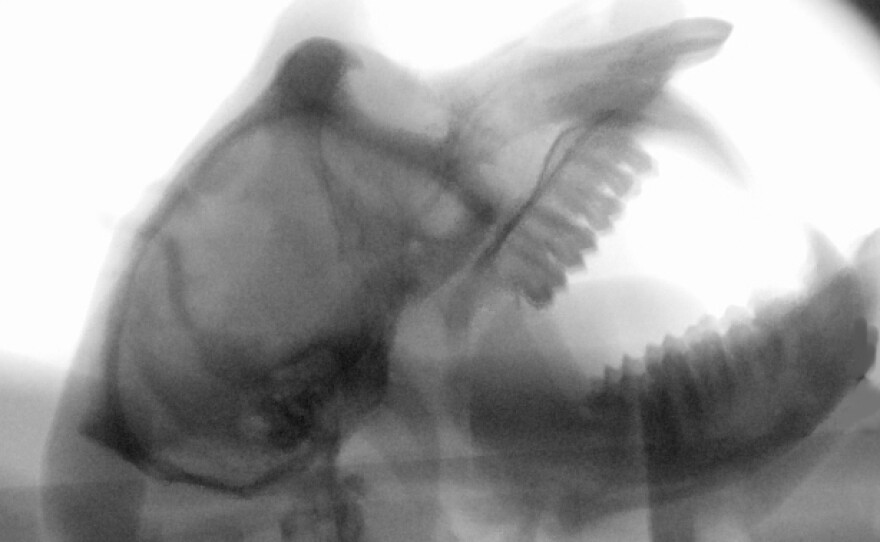
If you could change the way a monkey or an ape's brain is wired, that animal would be capable of producing perfectly intelligible speech.
That's the conclusion of a study that closely tracked the movements of a monkey's mouth and throat with X-rays, to understand the full potential of its vocal tract.
Researchers then used that information to create a computer model of what it would sound like if the monkey were able to say phrases such as "happy holidays."
The finding calls into question long-held assumptions about how humans developed their unique ability to use spoken language.
"What you'll find in the textbooks is that monkeys can't talk because they don't have the appropriate vocal tract to do so," says Tecumseh Fitch, a cognitive biologist at the University of Vienna. "That, I think, is a myth. My colleagues and I all get very tired of seeing this. But you see it in all the textbooks. Lots of popular books, and also scholarly books about the evolution of language, assume that in order to evolve speech we had to have massive changes in our vocal tract. "
In the past, scientists looked at dead animals to judge what their vocal tracts could do. But Fitch says that made people vastly underestimate the flexibility of nonhuman mammals.
He and his colleagues monitored a long-tailed macaque named Emiliano as he made a wide range of different gestures and sounds, including lip-smacks, yawns, chewing, coos and grunts. Their special equipment took a rapid series of X-rays that allowed them to capture the full range of movement in the monkey's vocal tract. Then they used computer models to explore its potential for generating speech.
Friday, in the journal Science Advances, his team reports that monkeys would be physically capable of producing five distinguishable vowels — the most common number of vowels found in the world's languages.
And human listeners could clearly understand phrases they created with their synthesized monkey speech, including a marriage proposal.
The bottom line, says Fitch, is that a monkey's speech limitations stem from the way its brain is organized.
"As soon as you had a brain that was ready to control the vocal tract," Fitch says, "the vocal tract of a monkey or nonhuman primate would be perfectly fine for producing lots and lots of words."
The real issue is that monkeys' brains do not have direct connections down to the neurons that control the larynx and the tongue, he says. What's more, monkeys don't have critical connections within the brain itself, between the auditory cortex and motor cortex, which makes them incapable of imitating what they hear in the way that humans do.
Rise of the Planet of the Apes, a science fiction movie from 2011, actually has the right idea, notes Fitch. In that film, after a lab chimp named Caesar undergoes brain changes, he eventually is able to speak words such as "No."
"The new Planet of the Apes is a pretty accurate representation of what we think is going on," says Fitch.
Copyright 2016 NPR. To see more, visit http://www.npr.org/.





